2022 Genesis GV70 Preview: Korea's Second Luxury SUV Targets Macan

Fresh off the one-two punch of the GV80 SUV and second-generation G80 sedan last year, the Korean luxury brand is turning its attention to the next size down. Genesis will update the G70 sport sedan ( which you can read about here), but the bigger news is the GV70, which will introduce the brand into the ruthlessly competitive compact luxury SUV segment. We spent a morning hands-on with both, to get a better idea of what customers can expect—and what competitors should be worried about.
Not a shrunken-down GV80
Pictures don’t quite convey the size of the 2022 Genesis GV70. The initial reveal shots had it looking like a slightly smaller GV80. But here at in the metal, it’s noticeably more compact. No need to bust out the tape measure; the Genesis team lets us know it’s some nine inches (230 mm) shorter. The sharply raked rear hatch also visually shrinks the design, while giving it an altogether more aggressive stance than the stately GV80.
SEE ALSO: 2021 Genesis GV80 Review: Putting ‘Em All on NoticeThe Genesis spokespeople tell us the 70-series vehicles represent more of the athletic side of the “Athletic Elegance” design language. The GV70 carries some of the design cues found on the GV80, like the quad-line head- and taillights, the diamond-shaped grille, and the “Parabolic Line” gently arching from the headlights through the rear shoulders. But the design team has tweaked them, with more curvaceous lines on the grille and headlights, and a clean, rounded hatch instead of the muscle car-inspired concave GV80 treatment. The C/D-pillar treatment will likely prove the most divisive; Genesis says it’s meant to convey motion, but from the driver’s seat, it also eats into visibility. Huge 21-inch wheels are available, and their spokes feature the same G-Matrix pattern found throughout the modern Genesis line.
One surprise feature is only really noticeable in person: the hood rolls down and just slightly over the bodywork between the headlights and grille. It gives the GV70’s front end a sense of layering. The drag coefficient doesn’t hurt much either, coming in at a slippery-for-an-SUV 0.32.
This Korean-spec unit has turn signals just above the exhaust tips, which worries us about visibility in truck-happy North America. Genesis confirms the taillights will function as turn signals in these parts. That said, the reverse lamps remain even lower, flanking the diffuser.
Regardless, the GV70 has serious swagger. The rakish profile puts it right between the standard and coupe-style body shapes offered at BMW and Mercedes, which could be a smart play for a newer addition to the field. It’s also the approach Porsche took with the Macan, a car closest to the dimensions of the GV70.
Two distinct personalities
Genesis Canada’s Richard Trevisan is quick to point out that the compact crossover segment is even more competitive than the mid-size market. To cater to the tastes of the wider compact market, the GV70 will feature two distinct visual flavors.
The one you see here is a Sport—well, on the outside anyway (more on that later). The lower front air intakes are larger, as is the pattern within the grille. A black trim line runs from these larger intakes around the entire lower section of the GV70, wrapping into a bumper featuring two enormous exhaust tips. They’re real too, though the pipe shrinks pretty quickly. Rounding off the Sport changes is a unique three-spoke steering wheel; other trims stick to Genesis’ current crescent-shaped design.
SEE ALSO: 2020 Mercedes-AMG GLC 43 Review: Aufrecht Melcher GoldilocksIn Canada, the more aggressive look is reserved for the the V6-powered Sport and Sport Plus, and is available on the four-cylinder Prestige trim. If it’s too loud for you, the rest of the line features a more demure look with smaller intakes, more chrome, and shield-shaped exhaust outlets.
One thing that doesn’t change between trims is the available exterior color palette. Genesis will offer the GV70 in 12 colors, four of which are matte. This includes a particularly excellent shade of purple (“Barossa Burgundy”).
Interior is big on style (and ovals)
The interior on this pre-prod is mostly a mid-level Prestige design. It features ultramarine blue leather and suede, with red contrast stitching: on paper it’s a little out there, but in practice the result is sharp. It’s one of seven different possible interior colors.
“We’re talking about fun-colored interiors,” says Genesis’ Bianca Pettinaro. In addition to the different hues, there are five different seat treatments, and the trim pieces match them. The carbon fiber bits in this amalgam unit correspond with the top Sport Plus trim (Sport Prestige in America), which gets quilted Nappa leather thrones. Lower trims get arguably the coolest bits, with backlit door panel inserts to match the ambient lighting. “That’s the goal, with it being such a big segment, you need to offer variety,” explains Pettinaro. “So we did that very intentionally, with the different designs, with the different interiors.”
The interior design is a stark contrast to the blocky, architectural look of the GV80. The thin line of vents is familiar, as is the large 14.5-inch touch screen (standard on every trim), but the majority of the physical controls are grouped within an oval stretching across most of the dash. The center console houses the familiar rotary shifter and a reworked dial for infotainment use. The latter loses the clicky, iPod Classic-style outer rim, and is now raised. A small cubby to the right houses the USB ports and standard wireless charge pad, keeping them hidden when not in use (and phone screens pointed away from drivers).
The GV70 has the longest wheelbase in the class, providing it with more than competitive levels of space. Trunk space is a Germans-beating 28.9 cubic feet (819 L) behind the rear seats. Fold them and figure nearly doubles to 56.9 cubes (1,610 L), more than the GLC but still shy of the X3.
Genesis is ensuring every GV70 comes well-equipped, with every model featuring a range of driver assists, including rear cross-traffic alert, advanced forward collision avoidance, smart cruise control, and safe exit assist. 12-way power-adjustable driver’s seat and power tailgate are both standard. The first fingerprint recognition system is also on board, allowing drivers to start the car up with all their saved settings without the key, so long as they have the requisite phone app. Other available features include a 16-speaker Lexicon sound system, trick 3D instrument panel, blind-spot monitoring, Hyundai’s excellent Ergo Motion seat (not available in Canada), Smaht Pahk, and a head-up display.
The necessary firepower
Genesis will offer two turbocharged engine options in the GV70. Both will be familiar from the GV80: a 2.5-liter four-cylinder and 3.5-liter V6. The four-cylinder spits out 300 hp and 311 lb-ft, as much as 50 hp more than any of the German competition’s four-pot offerings. The Acura RDX and Cadillac XT5 can’t match it, either.
V6 buyers gain access to 375 hp and 391 lb-ft of twist, dropping the GV70 right in the range of the X3 M40i, AMG GLC43, and Porsche Macan S. Every GV70 uses an eight-speed automatic, with standard paddle shifters mounted behind the steering wheel. For this SUV, Genesis will only be offering AWD, on both sides of the border.
SEE ALSO: 2020 BMW X3 PHEV Review: Plug-In the One to HaveThe EPA has only released V6 fuel economy figures so far: 21 mpg combined, split between 19 city and 25 mpg highway. The Canadian 3.5T figures are 11.6, 12.9, and 10.0 L/100 km, respectively. Genesis Canada did provide 2.5T numbers as well: 10.7 L/100 km city and 8.4 L/100 highway for an average of 9.7 L/100 km. We estimate a US average of around 25 mpg.
The one gap in the GV70 lineup is a lack of any sort of hybrid version. We know Genesis will have electric models in the near future: Trevisan reaffirmed as much during the preview. But for now, the GV70 is gas-only.
Pricing and availability
Genesis plans on having the GV70 available to customers this summer. How much they’ll have to pony up is still an unknown, however. The GV70 shares its drivetrain and much of its standard feature list with the larger GV80, which starts a few dollars shy of $50,000. It also has standard AWD. Taking all that into consideration, we expect the GV70 to start around $42,000 in America. The Canadian lineup will likely start higher, not just because of exchange rates, but because it starts with the Select trim, not Standard.
If the GV70 is as good to drive as the G70 it shares its platform with, Genesis could have another winner on its hands. We can’t wait to find out.
Discuss this story at our Genesis GV70 Forum.
Become an AutoGuide insider. Get the latest from the automotive world first by subscribing to our newsletter here.

Kyle began his automotive obsession before he even started school, courtesy of a remote control Porsche and various LEGO sets. He later studied advertising and graphic design at Humber College, which led him to writing about cars (both real and digital). He is now a proud member of the Automobile Journalists Association of Canada (AJAC), where he was the Journalist of the Year runner-up for 2021.
More by Kyle Patrick





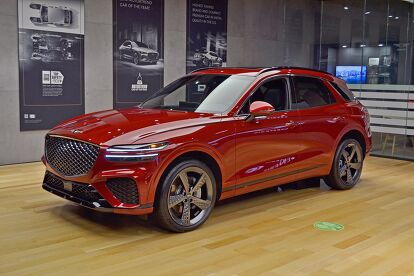





















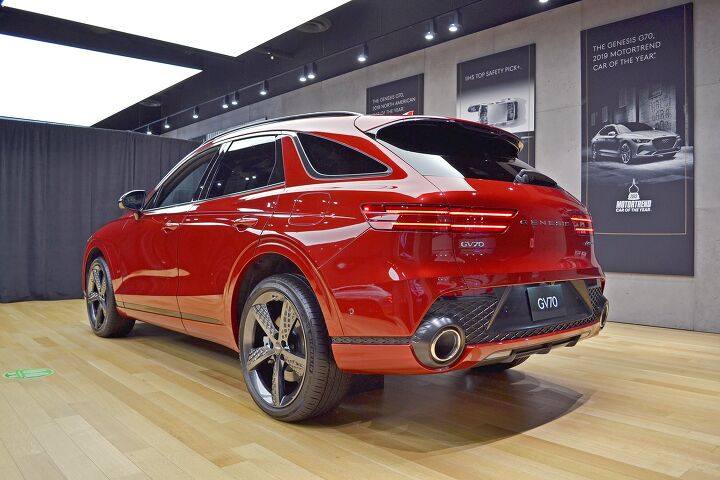























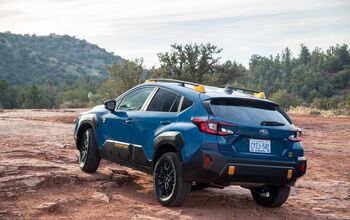



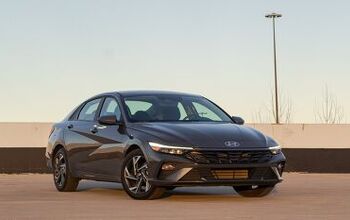



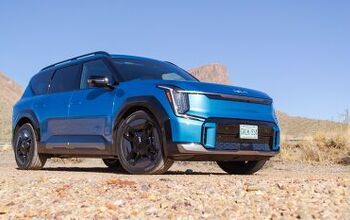


Comments
Join the conversation